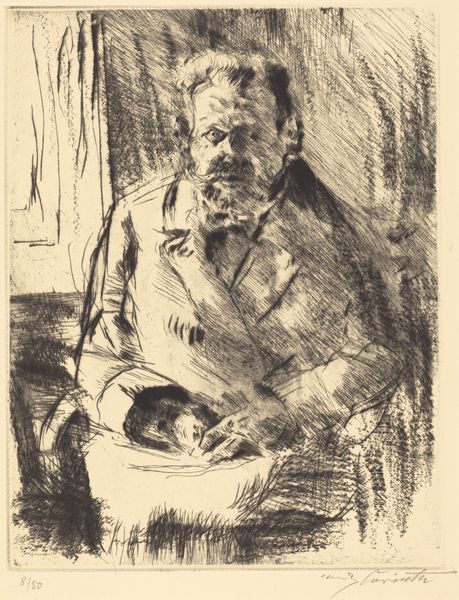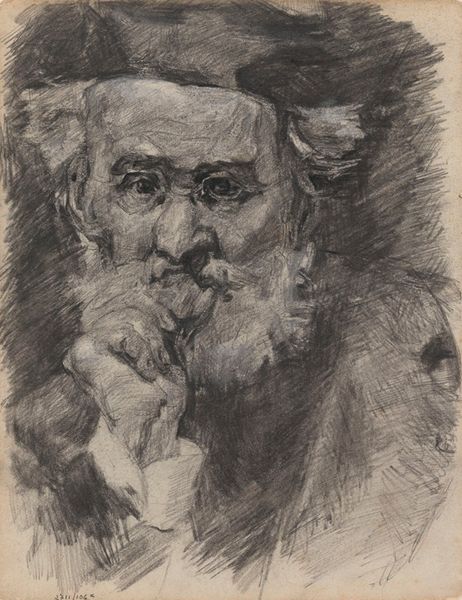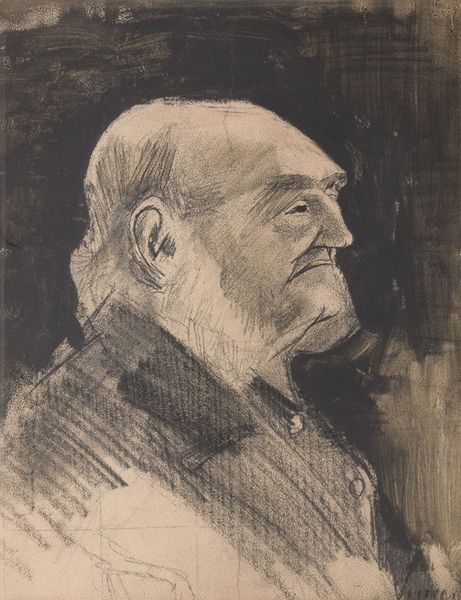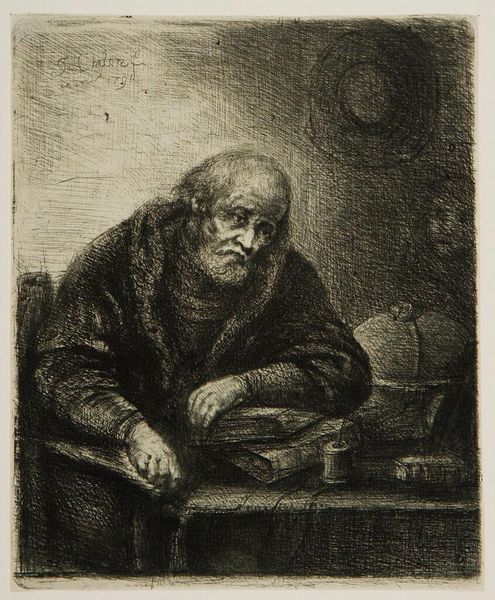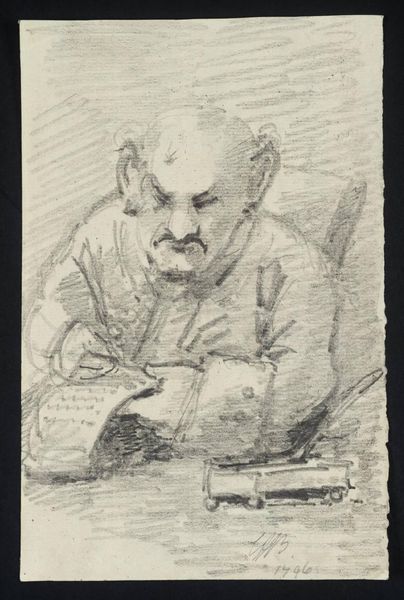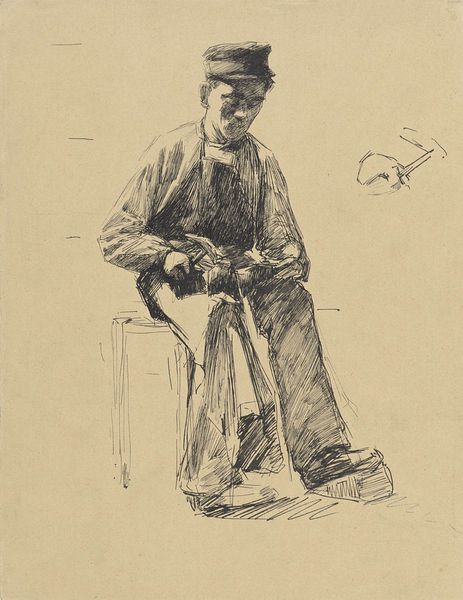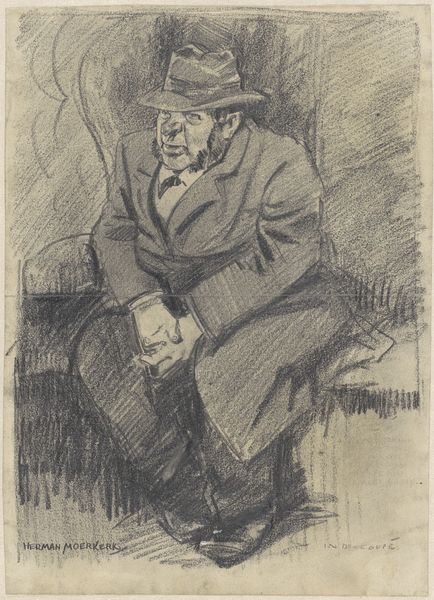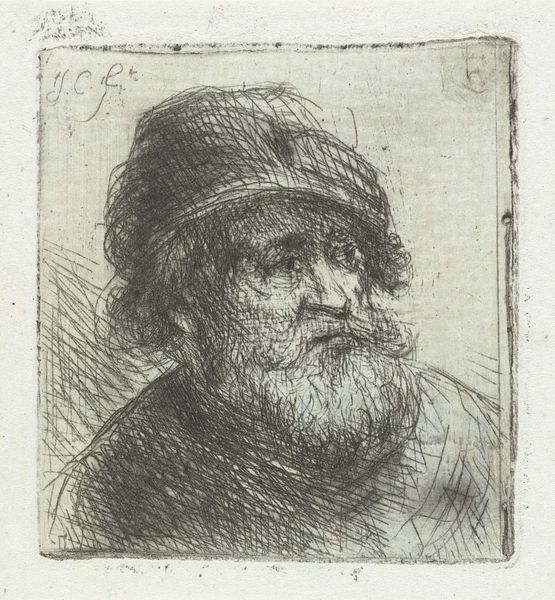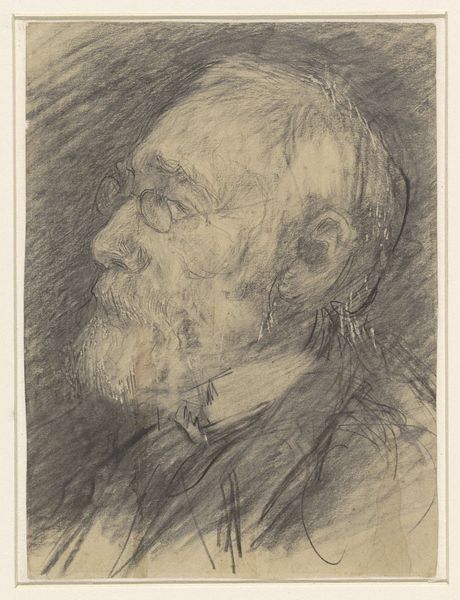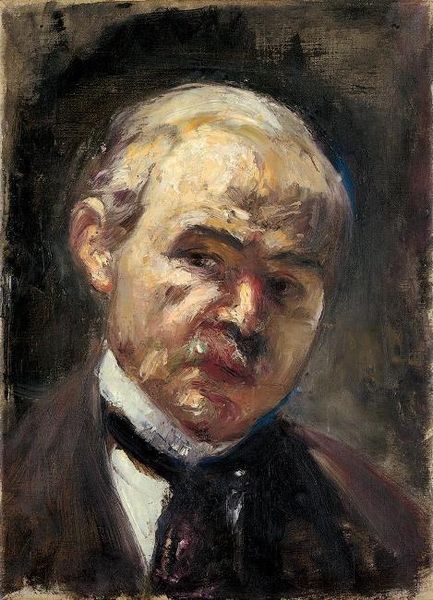
painting, oil-paint, impasto
#
portrait
#
painting
#
oil-paint
#
impasto
#
expressionism
#
modernism
Dimensions: 25 cm (height) x 21 cm (width) (Netto)
Editor: So here we have "The Father," a painting done sometime between 1909 and 1913 by Kristian Kongsbøll. It's oil paint, heavily applied, giving it a very textured surface. There's something melancholy about this portrait that I can’t quite put my finger on. What do you see in this piece? Curator: It's funny you mention melancholy because that's exactly where my mind drifts when I look at it, too. But the wonderful thing about Kongsbøll, for me, is that even in the somber hues, there's this incredible energy—almost a restless quality. Look at those impasto strokes! They’re not just painting a face, they're building a landscape of feeling. Do you get a sense of how personal it feels? Editor: Yes, absolutely. It feels incredibly intimate, like peering into someone’s soul. The limited color palette really emphasizes the texture, like the paint itself is bearing witness to the father's emotions. Curator: Exactly! It's as if Kongsbøll is inviting us to experience, firsthand, the weight and depth of this figure's inner world. It’s raw. Maybe unfinished. It speaks volumes. Does it feel conventionally beautiful to you? Editor: Not conventionally, no. But the intensity of emotion makes it beautiful in its own way. Curator: I completely agree. Sometimes, the most powerful art isn't about pretty surfaces; it's about unflinching honesty. And I think Kongsbøll really nails that here. Editor: This has changed my perspective. It’s not just a sad portrait, but an intimate, bold statement about human emotion, captured through the physicality of paint. Curator: And for me, each visit reveals another layer, like whispers of a conversation long past. Art, like life, is about continual discovery, isn't it?
Comments
No comments
Be the first to comment and join the conversation on the ultimate creative platform.

